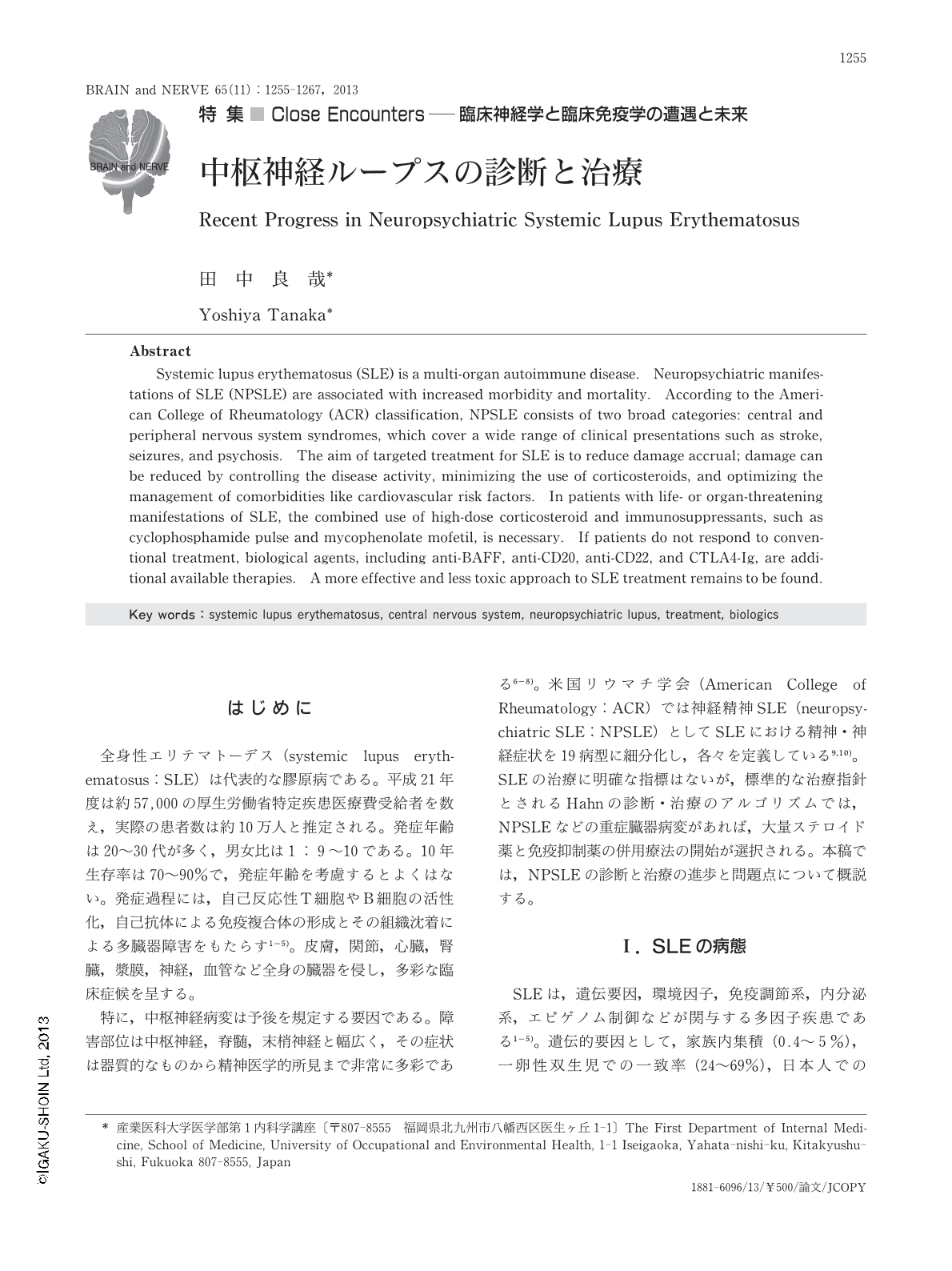Japanese
English
- 有料閲覧
- Abstract 文献概要
- 1ページ目 Look Inside
- 参考文献 Reference
はじめに
全身性エリテマトーデス(systemic lupus erythematosus:SLE)は代表的な膠原病である。平成21年度は約57,000の厚生労働省特定疾患医療費受給者を数え,実際の患者数は約10万人と推定される。発症年齢は20~30代が多く,男女比は1:9~10である。10年生存率は70~90%で,発症年齢を考慮するとよくはない。発症過程には,自己反応性T細胞やB細胞の活性化,自己抗体による免疫複合体の形成とその組織沈着による多臓器障害をもたらす1-5)。皮膚,関節,心臓,腎臓,漿膜,神経,血管など全身の臓器を侵し,多彩な臨床症候を呈する。
特に,中枢神経病変は予後を規定する要因である。障害部位は中枢神経,脊髄,末梢神経と幅広く,その症状は器質的なものから精神医学的所見まで非常に多彩である6-8)。米国リウマチ学会(American College of Rheumatology:ACR)では神経精神SLE(neuropsychiatric SLE:NPSLE)としてSLEにおける精神・神経症状を19病型に細分化し,各々を定義している9,10)。SLEの治療に明確な指標はないが,標準的な治療指針とされるHahnの診断・治療のアルゴリズムでは,NPSLEなどの重症臓器病変があれば,大量ステロイド薬と免疫抑制薬の併用療法の開始が選択される。本稿では,NPSLEの診断と治療の進歩と問題点について概説する。
Abstract
Systemic lupus erythematosus (SLE) is a multi-organ autoimmune disease. Neuropsychiatric manifestations of SLE (NPSLE) are associated with increased morbidity and mortality. According to the American College of Rheumatology (ACR) classification, NPSLE consists of two broad categories: central and peripheral nervous system syndromes, which cover a wide range of clinical presentations such as stroke, seizures, and psychosis. The aim of targeted treatment for SLE is to reduce damage accrual; damage can be reduced by controlling the disease activity, minimizing the use of corticosteroids, and optimizing the management of comorbidities like cardiovascular risk factors. In patients with life- or organ-threatening manifestations of SLE, the combined use of high-dose corticosteroid and immunosuppressants, such as cyclophosphamide pulse and mycophenolate mofetil, is necessary. If patients do not respond to conventional treatment, biological agents, including anti-BAFF, anti-CD20, anti-CD22, and CTLA4-Ig, are additional available therapies. A more effective and less toxic approach to SLE treatment remains to be found.

Copyright © 2013, Igaku-Shoin Ltd. All rights reserved.


